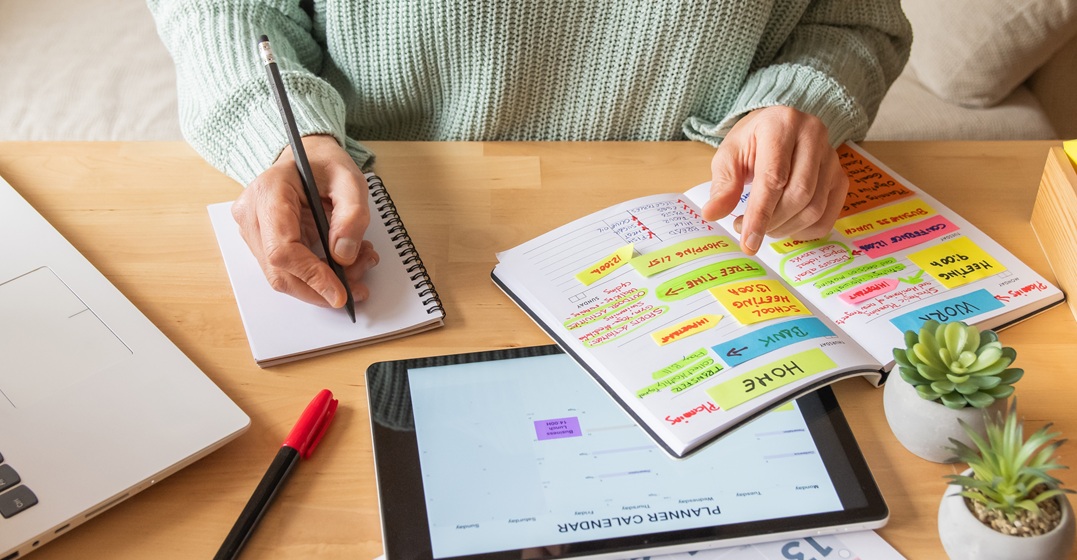German conjunctions explained: Connecting German sentences

Are you sick of talking like a German robot? German conjunctions can add color and texture to the way you talk and write, and help you say more than simply, “Ich spreche Deutsch. Deutsche Grammatik ist sehr schwer.” (“I speak German. German grammar is very difficult.”). By the end of this guide, you’ll be able to connect those two sentences with each other — and do a lot more, for that matter.
So, don’t despair! Instead, follow us into the realm of German conjunctions. We’ll not only review why we need them, but also how to use them in everyday conversation.
- How do you use conjunctions in German?
- List of German conjunctions
- Coordinating conjunctions
- Subordinating conjunctions
- The difference between dass and das

Learn German with Lingoda
How it works

How do you use conjunctions in German?
Without conjunctions, a lot of sentences would sound pretty dull.
You use conjunctions to connect two sentences, phrases or clauses and make them more understandable. Some common German conjunctions include sondern, wenn, als, weil, und and oder.
Let’s look at an example to illustrate how conjunctions work:
- Two sentences without a conjunction: Ich ging ins Kino. Ich liebe es, neue Filme zu schauen. (I went to the cinema. I love watching new movies.)
- One sentence with a conjunction: Ich ging ins Kino, weil ich es liebe, neue Filme zu schauen. “I went to the cinema, because I love watching new movies.”)
Good news for everyone aspiring to learn German: conjunctions can’t be inflected, which means they do not adapt to genus, numbers or cases. So, that’s one less thing you have to worry about!
List of German conjunctions
| German conjunction | English meaning |
| und | and |
| oder | or |
| aber | but |
| denn | for/because |
| weil | because |
| obwohl | although |
| wenn | when/if |
| als | when/as |
| nachdem | after |
| bevor | before |
| solange | as long as |
| damit | so that |
| falls | in case/if |
| während | while/during |
| seit | since |
| bis | until |
| da | since/because/therefore (depending on the context) |
| entweder...oder | either...or |
| weder...noch | neither...nor |
Coordinating conjunctions
Coordinating conjunctions are often used to connect two main clauses (Hauptsätze) with each other. Less frequently, they are used to connect two subordinate clauses.
The sentence’s structure does not change in any way when using this type of conjunction. The conjunction simply “coordinates” the different parts of the sentence with each other.
Here’s an example of a coordinating conjunction (und) connecting two main clauses:
- Ich bin zuhause und mache Hausaufgaben. (I’m at home and doing homework.)
As the subject (ich) is the same in both clauses, you don’t have to repeat it in the second half of the sentence when using a coordinating conjunction. The same goes for identical verbs in both sentences.
You could either say:
- Ich bin gerade unterwegs und ich bin nicht zuhause. (I’m on the road right now and I’m not at home.)
Or you could leave the second ich bin out of the second part of the sentence:
- Ich bin gerade unterwegs und nicht zuhause.
You can also use coordinating conjunctions to connect two subordinate clauses:
- Ich bin zuhause, da ich Hausaufgaben machen und lernen muss. (I’m at home because I have to do my homework and study.)

Learn German with Lingoda
How it works

Subordinating conjunctions
Subordinating conjunctions connect a main clause (Hauptsatz) with a subordinate clause (Nebensatz).
Subordinate clauses almost always begin with a subordinating conjunction. This is also the case when the subordinate clause precedes the main clause. Regardless of the order in which the subordinate clause and main clause appear, they are always separated by a comma.
Since the subordinate clause is introduced with a subordinating conjunction, the conjunction always precedes the clause itself. In contrast to coordinating conjunctions, the sentence structure changes with subordinating conjunctions to conjunction + subject + rest of clause+ verb.
Here’s an example:
- Wenn ich lese, bin ich entspannt. (When I’m reading, I am relaxed.)
The difference between dass and das
German grammar can be quite confusing, thanks to its many exceptions. Conjunctions and how to use them is a topic that can be a challenge for even advanced learners and native speakers.
Many learners especially struggle with the difference between the subordinating conjunction dass and the relative pronoun das, the latter of which is used to introduce relative clauses in a sentence.
Relative pronouns like der, die and das are used to describe persons, animals and things. For example:
- Die Katze, die auf dem Baum sitzt, gehört meinem Nachbarn. (The cat, which is sitting on the tree, belongs to my neighbor.)
Dass, on the other hand, is a subordinating conjunction. It can be used like this:
- Wir glauben, dass er lügt. (We believe that he’s lying.)
German conjunctions: Connecting sentences and ideas
Even though the topic of German conjunction might seem complicated at first, you will find that they help you build useful German sentences. Conjunctions like und, oder, falls and wenn make the way we talk and write more lively and understandable. While coordinating conjunctions mainly connect main clauses with each other and don’t interfere with their sentence structure, subordinating conjunctions can change the structure of the clause they precede.

Learn German with Lingoda
How it works














